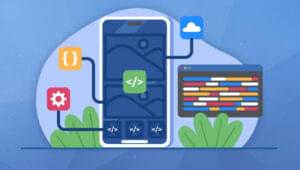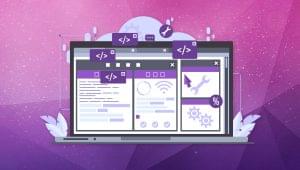Keep up to date on current trends and technologies
Mobile

Essential React Native Performance Tips and Tricks
Shaik Mukthahar

What’s the Difference between Flutter and React Native?
Lucero del Alba

Top Mobile App Development Programming Languages
Lucero del Alba

Get Deeper Insights Into Your App Performance with HeadSpin
SitePoint Sponsors

How to Develop Apple Apps: Using Xcode & Swift to Program for iOS & macOS
SitePoint Team

How to Simulate Mobile Devices with Device Mode in Chrome
Craig Buckler

How to Test Responsive Web Design Cross-Browser Compatibility
Craig Buckler

How to Create a QR Code Reader for Your Mobile Website
Dmitri LauBeardscript

Mobile Attribution 101: What Every Developer Needs to Know
Dvora Goldstein

How to Build a News App with Ionic 4 & Angular
Ahmed Bouchefra

Develop an Android App with React Native & Publish on Google Play
Karl Penzhorn

Build a React Native Application & Authenticate with OAuth 2.0
Matt Raible

3 Mobile UX Trends That Are Changing How We Design
Larry Alton

Things To Know About Android Boot and Recovery Images
Alex Roman

How to Authenticate your Android Users Using Phone or Email
Theodhor Pandeli

Succeeding with Mobile Ads
Michael Ye

Top 10 Free Bootstrap Themes For Mobile
Ada Ivanoff

Step Away From the Ledge: Mobile Apps Aren’t Dying
Larry Alton

How to Use AVCapturePhotoOutput’s Best Photo Features
Deivi Taka

Push Notifications in Your Ionic App with OneSignal
Charles Muzonzini

How To Write Tests For Android Development
Abbas Suterwala

Location-Based Marketing Will Rely on Mobile in 2017
Larry Alton

Editorial: Is Smartphone Addiction a Problem for Developers?
Ariel Elkin
10 Free UI Kits for Android Nougat and iOS 10
Ada Ivanoff
Animating an Android Floating Action Button
Valdio Veliu

Killer Way to Show a List of Items in Android Collection Widget
Gagandeep Singh
Authentication and Sharing in Android with the Google+ API
Theodhor Pandeli
5 Ionic Framework App Development Tips and Tricks
Charles MuzonziniPatrick Catanzariti

Editorial: Is It the End of an Era for Windows?
Ariel Elkin

Building a UI with Kotlin and Anko
Ankul Jain

Editorial: Mobile and the 2017 Developer Survey Results
Ariel Elkin

Sourcehunt – Swift Edition – March 2017
Josh Marchello
Showing 32 of 763